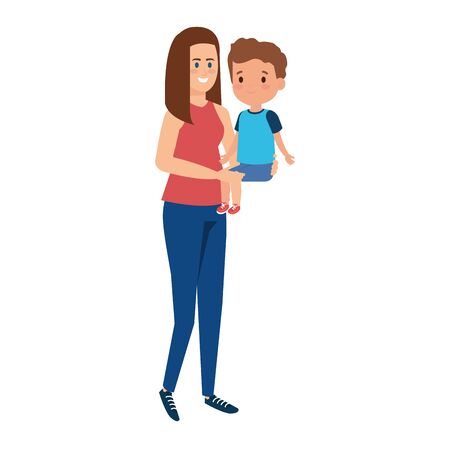Understanding Co-Parenting Dynamics
Co-parenting after divorce is a unique journey, especially within the American family landscape. It goes beyond simply splitting time between two households; it’s about working together as a team for your child’s well-being—even when you’re no longer a couple. In the U.S., where family structures and schedules can be complex, learning to co-parent effectively is a crucial step toward supporting your child’s emotional and social growth.
At its core, co-parenting means actively collaborating with your ex-partner to make important decisions about your child’s life, from education to health care and daily routines. For many divorced parents in America, this involves navigating different values, lifestyles, and even new relationships—all while keeping your child’s needs front and center. Finding the right approach isn’t just about minimizing conflict; it’s about creating a supportive, stable environment where your kids can thrive.
The stakes are high: Research shows that children do best when both parents are involved and communicate respectfully. That’s why understanding the dynamics of co-parenting—and being open to finding a style that fits both you and your ex—is essential. By embracing a growth mindset and treating parenting as an ongoing learning process, you set the stage for healthier family interactions and better outcomes for everyone involved.
Exploring Different Parenting Styles
After a divorce, co-parenting can feel like you’re both playing the same game but using different rulebooks. Understanding various parenting styles is a great first step to finding common ground. In the U.S., families often lean toward certain approaches based on values like independence, respect, and open communication. Let’s break down the main parenting styles, their pros and cons, and see how they align with American family life.
Main Types of Parenting Styles
| Parenting Style | Description | Pros | Cons | Fit with American Values |
|---|---|---|---|---|
| Authoritative | High expectations with warmth and support. Sets clear rules but encourages independence. | Fosters responsibility, self-esteem, and good decision-making skills. | Requires consistency; may be challenging if parents disagree on boundaries. | Strong fit—emphasizes balanced freedom and structure. |
| Permissive | Warm and accepting, few demands or rules. Kids have lots of freedom. | Encourages creativity and self-expression. | Lack of boundaries can lead to behavioral issues or poor self-discipline. | Mixed fit—values freedom but can clash with need for limits. |
| Authoritarian | Strict rules, high expectations, little open dialogue. “Because I said so” approach. | Clear structure; kids know what’s expected. | Can stifle independence and harm self-esteem; less emotional connection. | Less aligned—may conflict with emphasis on communication and autonomy. |
| Uninvolved/Neglectful | Low responsiveness and little guidance. Minimal involvement in child’s life. | Kids learn independence by necessity. | Lack of support can result in emotional or behavioral struggles. | Poor fit—does not align with American focus on engagement and support. |
Navigating Differences Together
If you and your co-parent have different styles, it’s normal! The key is to identify which elements from each approach best support your child’s growth while respecting each other’s values. For example, combining the warmth of permissive parenting with the structure of authoritative methods can create a supportive yet predictable environment for your kids. Remember: blending styles is like mixing power-ups in a game—finding the right combo can help everyone level up!

3. Establishing Common Ground
Successfully co-parenting after a divorce means building bridges, not walls. Even if you and your ex have different ideas about parenting, finding common ground is the key to raising happy, well-adjusted kids. Here are some practical strategies for communicating effectively and reaching agreements, even when your opinions clash.
Open Lines of Communication
Start by setting up regular check-ins—these can be weekly calls, texts, or in-person meetings focused solely on your child’s needs. Keep conversations respectful and child-centered. If things get heated, take a break and revisit the topic when emotions have cooled down. Remember, it’s totally normal to disagree sometimes!
Focus on Shared Goals
No matter how different your parenting styles might be, both of you want what’s best for your child. Make a list together of your shared goals, like healthy routines, good grades, or emotional wellbeing. This “parenting mission statement” can help guide tough decisions and remind you both that you’re on the same team.
Master the Art of Compromise
You won’t always see eye-to-eye, but compromise is your secret weapon. If one parent wants stricter screen time limits while the other prefers more flexibility, try meeting in the middle with set guidelines that allow for special exceptions. It’s all about give-and-take—think of it as leveling up your teamwork skills!
Effective Dialogue Tips
Use “I” statements instead of “you” statements to avoid blame (“I feel concerned about bedtime routines,” instead of “You never stick to the schedule”). Listen actively by repeating back what you’ve heard and asking questions for clarity. When stuck, suggest brainstorming solutions together rather than insisting on one way or another.
Establishing common ground takes patience and practice, but every win—big or small—helps build trust between co-parents. Remember: progress over perfection! The more you work together, the easier it gets to navigate challenges side-by-side.
4. Creating a Unified Routine for the Kids
One of the most powerful ways to support your children after divorce is by establishing consistent routines across both households. Consistency helps children feel secure and know what to expect, even when their environment changes. Let’s dive into why this matters and how you can make it work, no matter how different your parenting styles might be.
The Power of Consistency
Kids thrive on predictability. After a divorce, life can feel uncertain and sometimes chaotic for them. By working together to keep routines—like bedtime, homework time, and screen limits—similar in both homes, you create an anchor that reassures your child they’re safe and cared for, wherever they are.
Strategies for Crafting Cross-Household Routines
- Communicate Openly: Sit down with your co-parent and discuss which routines are most important for your child’s well-being.
- Pick Your Non-Negotiables: Decide on a few essential routines (e.g., bedtime, meal times) that will stay the same in both homes.
- Stay Flexible Where You Can: Agree on areas where some differences are okay, so each parent can maintain their own style while still providing stability.
- Use Shared Tools: Try apps or shared calendars to keep track of activities, assignments, and special events across both homes.
Sample Unified Routine Table
| Routine | Moms House | Dads House | Notes/Agreements |
|---|---|---|---|
| Bedtime | 8:30 pm | 8:30 pm | No screens 30 minutes before bed |
| Dinner Time | 6:00 pm | 6:00 pm | Dinner as a family whenever possible |
| Homework Time | After dinner until finished | After dinner until finished | No video games until homework is done |
| Weekend Activities | Parks, family movie night Saturday | Parks, family movie night Saturday | Alternate who picks the movie each week |
| Chores | Sweep kitchen Monday/Wednesday/Friday | Sweep kitchen Tuesday/Thursday/Sunday | Same task, different days; earns allowance in both houses |
A Growth-Minded Approach to Challenges
No two families are alike—and that’s okay! If something isn’t working, treat it like a side quest in a game: regroup with your co-parent, adjust the plan, and try again. The real win comes from showing your kids you can work together for their benefit. Remember, every effort you put into creating unified routines helps your children feel grounded and loved during this new chapter.
5. Navigating Difficult Conversations and Conflicts
Even the most harmonious co-parenting relationships hit rough patches, especially after a divorce. Disagreements are natural, but how you handle them can make all the difference for your children’s well-being. Here’s how to approach those tough talks with a growth mindset and a focus on teamwork.
Stay Respectful, Even When Emotions Run High
It’s easy to let old frustrations resurface during disagreements, but keeping conversations respectful is key. Try to listen actively—really hear what your co-parent is saying before responding. Avoid blaming or using harsh language; instead, use “I” statements to express your feelings (“I feel concerned when…” rather than “You always…”). This keeps the conversation constructive and models healthy communication for your kids.
Focus on Solutions, Not Problems
When conflicts arise, shift your energy from arguing about who’s right to brainstorming solutions together. Ask questions like, “How can we make this work for everyone?” or “What’s best for our child in this situation?” Treat disagreements as puzzles to solve side-by-side, not battles to win. This solution-focused approach helps both parents feel heard and respected while keeping the spotlight on your child’s needs.
Keep Kids’ Best Interests at the Center
No matter how intense a disagreement gets, remind yourselves of your shared goal: raising happy, healthy children. Before making any decisions or responding in frustration, ask yourself, “Is this choice truly best for my child?” When kids see their parents working together—even when it’s tough—they learn important lessons about compromise and empathy.
Practice Self-Care and Get Support If Needed
Some conversations will be harder than others, and that’s okay! It’s perfectly normal to need a break or seek support from a counselor or mediator. Taking care of your own emotional health allows you to show up as your best self for these challenging discussions—and for your children. Remember: co-parenting is an ongoing quest where every step forward counts toward building a positive future for your family.
6. Encouraging Flexibility and Growth
Co-parenting after divorce isn’t a one-time agreement—it’s an ongoing journey that requires both flexibility and a willingness to grow. By treating co-parenting as an evolving process, parents can model a growth mindset not just for themselves, but also for their children.
Adapting to Change Together
Life after divorce brings new routines, schedules, and unexpected changes. Instead of sticking rigidly to old patterns, successful co-parents embrace these changes and adapt together. This means being open to feedback, regularly checking in with each other, and making adjustments when something isn’t working as planned.
Modeling a Growth Mindset for Your Kids
When kids see their parents learning from challenges, admitting mistakes, and striving to improve their partnership, they pick up valuable lessons about resilience and collaboration. Explain to your children that everyone—including adults—continues to learn and grow. Celebrate small wins as you figure out what works best for your family.
Staying Flexible for Long-Term Success
No two families are the same, so it’s important to stay curious and open-minded. Regularly revisit your co-parenting strategies and be willing to try new approaches. When both parents show that they’re committed to personal growth and cooperation, children are more likely to feel secure, supported, and confident in navigating life’s ups and downs.


